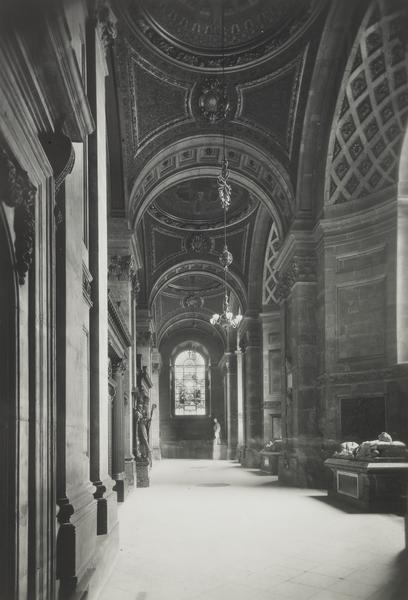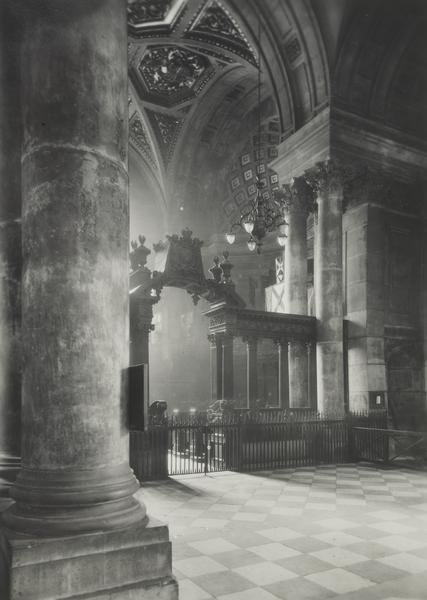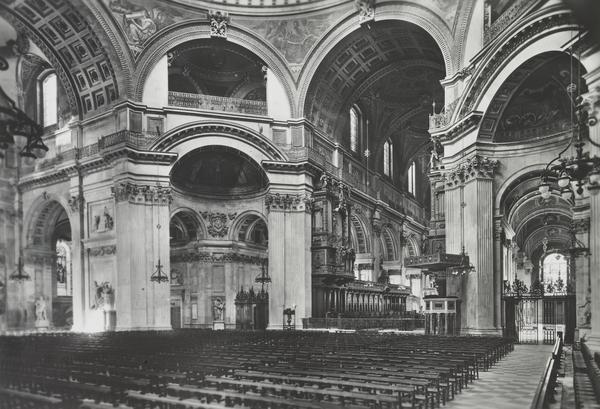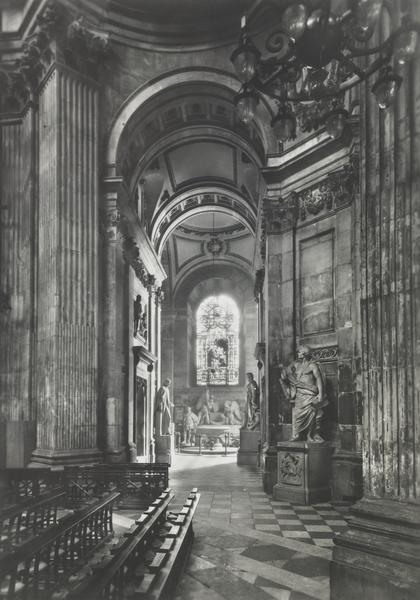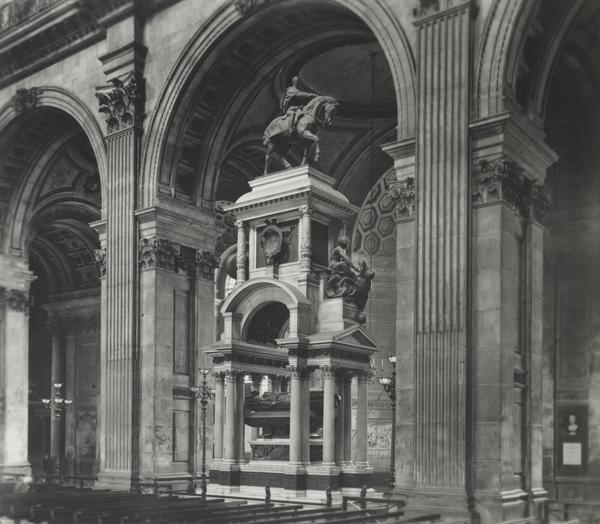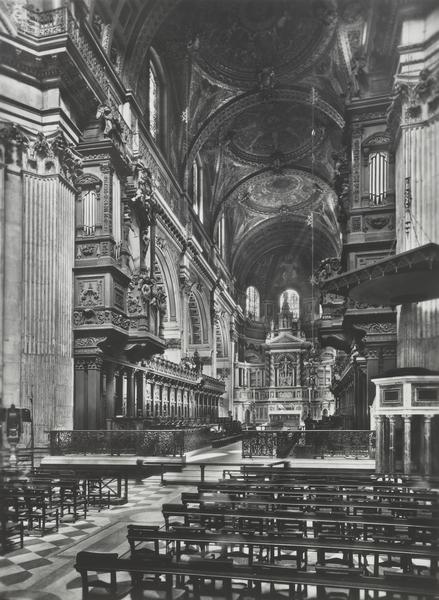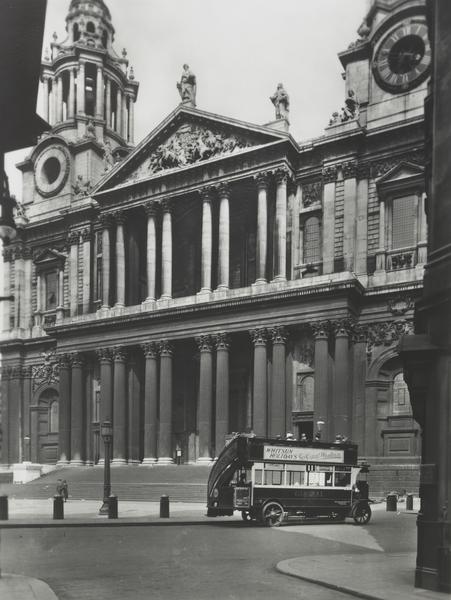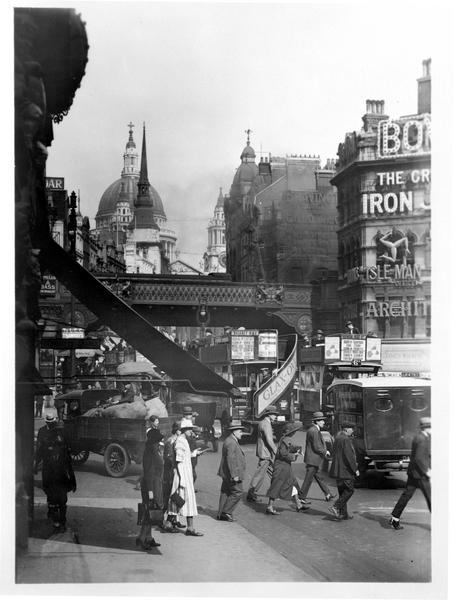Inside St Paul’s Cathedral
In the 1920s and early 1930s, George Davison Reid photographed the streets and buildings of London. Here, he takes us on a private tour of St Paul’s Cathedral, the domed, Christopher Wren-designed landmark that’s dominated the London skyline since 1710.
St Paul’s Cathedral, City of London
1920–1935

A walk through the city
In this photo series, Reid wanted to record an extended walk through the cities of Westminster and London. By the time of his death in 1933, he’d made over 700 photographs for the project, organised into albums. He wrote two texts in rhyme called The Route Ornate to go with the images.

Atmospheric whole-plate photography
Reid shot with a bulky whole-plate stand camera. These were popular with professional photographers until the early 1900s, when smaller cameras using light-sensitive film took over. Whole-plate cameras used large photographic plates, typically made of glass, to capture high-quality images. Reid also stood on a stepladder to get a higher viewpoint. That’s a lot of kit to carry around.

The crossing under the dome
St Paul’s world-famous dome sits above the many rows of empty pews in the heart of the cathedral. It’s actually made up of three different domes: an outer dome, an inner dome and a supporting brick cone concealed in between the two.

St Paul’s monuments
You can find over 500 monuments in the cathedral – including many marble statues like these. A ‘monument’ in a church is a memorial to a person who has died.

The Wellington monument
This statue commemorates Arthur Wellesley, 1st Duke of Wellington. He was the leading military officer (and later, prime minister) best known for defeating French revolutionary leader Napoleon Bonaparte at the Battle of Waterloo in 1815. He died in 1852, but the monument wasn’t completed until 1912. Wellington was buried in the church’s crypt.

The choir and the altar
Here, you can see the old ornate altar designed by architect Thomas Garner. It divided opinion when it was unveiled in 1888 – some thought it added to the architecture of the church, others argued it ruined Wren’s original vision. It was damaged by a German bomb during the Blitz in 1940. A new altar was installed in 1958.


